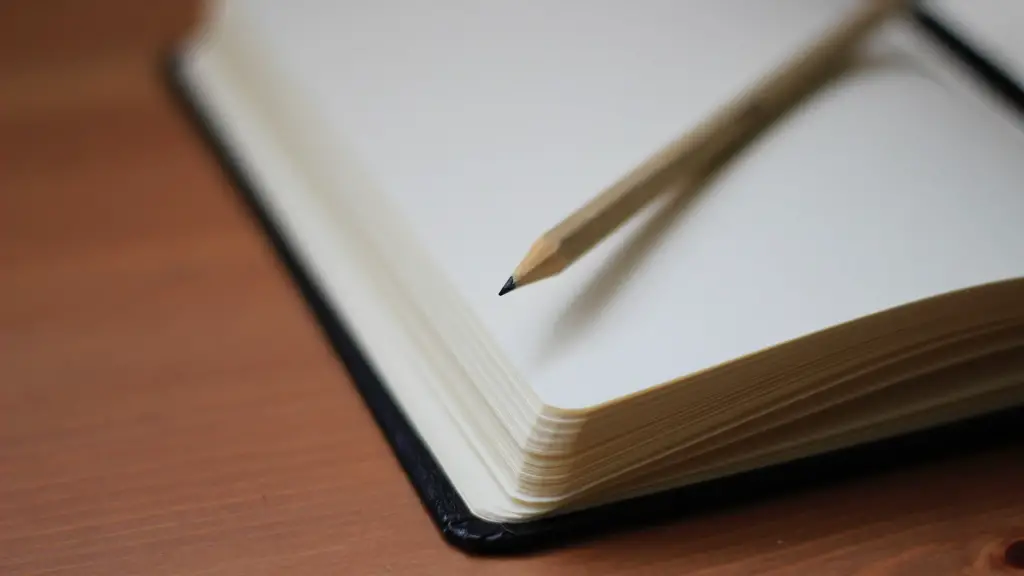Definition of Poetry Essay
A poetry essay is a critical analysis essay that focuses on the reader’s understanding of a poem. Elements of the poem are evaluated and analyzed, including the tone, setting, theme, and poetic devices. The purpose of this essay is to explore a particular aspect, or theme in a poem or examine the poetic techniques used to create a piece of work.
Relevance of Poetry
Poetry has a long and respected history in literature. Poetry has been used throughout time to express feelings, thoughts and emotions. Writing a poem is an expression of inner feelings and can express some of life’s hardest moments and deepest meanings. For this reason, poetry is an important form of literature that should be studied and appreciated.
Forms of Poetry
Poetry can be divided into different forms or genres. These forms include, but are not limited to, epic poetry, lyrical poetry, sonnets, odes, narrative poetry, and dramatic poetry. Each of these forms has its own set of rules and conventions that are used to create a poem. This includes the use of imagery, meter, rhyme, tone, humour, dialogue and other techniques.
Critical Analysis of Poetry
When writing a poetry essay, it is important to consider the structure and the purpose of the poem. To do this, the reader should carefully examine the elements of the poem such as imagery, meter, rhyme, tone and structure. A poem can be analyzed for its impact on the reader and how it conveys emotion and ideas. A reader should also consider the context of the poem and how it relates to the author’s life and beliefs.
Analyzing the Poem
The next step in writing a poetry essay is to analyze the poem. This is done by examining the poem’s structure, imagery, diction, and figurative language. The reader should look for clues as to what the poem is trying to convey. The analysis should also consider how the author uses different poetic devices and conventions to create meaning. Finally, the analysis should assess the poem’s message or meaning in terms of its importance to the author and the reader.
Poetic Techniques
When analyzing a poem, it is important to look for different poetic techniques. These include, but are not limited to, alliteration, assonance, repetition, rhyme and meter. Each of these techniques has its own purpose and use in creating a poem. Alliteration is the repetition of the same sound at the start of a line. Assonance is the repetition of vowel sounds. Repetition is the repeating of certain words or phrases. Rhyme is the use of identical or similar words at the end of a line. Lastly, meter is the rhythm of the poem using stressed and unstressed syllables.
Expressing Emotions in Poetry
When reading and analyzing poetry, it is important to consider the emotions conveyed by the author. Poetry can be a powerful medium for expressing emotions such as love, hate, joy, sorrow, anger and fear. Analyzing the poem through identifying imagery, symbolism and other poetic devices allow readers to better understand the emotions being expressed in the poem. Readers should consider how the poem’s meaning might be affected by the author’s use of these techniques.
Effects of Language
In writing poetry, it is important to consider the effects of language. The poet should consider the meaning of words and how they might affect the poem’s overall message. The use of figurative language, metaphors, and other rhetorical devices can be used to create an emotional impact on the reader. The use of language also affects how the poem is interpreted by different readers, depending on their backgrounds and experiences.
Influencing the Reader
One of the goals of writing poetry is to create an emotional impact on the reader. A poem should be able to convey a certain message or emotion to the reader. To achieve this, the poet should consider the feelings that the poem evokes in the reader. The use of certain poetic devices such as imagery, figurative language, and metaphors can be used to influence the reader’s experience of the poem and its message.
Organization and Structure
The structure of a poem can influence how a reader perceives the poem. A poem can use structure and organization to convey meaning. Poetic devices such as meter, rhyme, and alliteration can be used to create structure and enhance the poem’s meaning. Examining the structure of a poem can help readers realize the theme or purpose of the poem.
The Poet’s Intention
Ultimately, the poet’s intention is the most important factor when it comes to understanding a poem. By understanding the overall message of the poem, the reader can gain insight into the thoughts and emotions of the poet. The poet’s intention can be inferred by examining the theme, imagery, and structure of the poem.
Creating Connections
When writing a poem, it is important for the poet to try to create a connection with the reader. This is done by engaging the reader with imagery, tone, and symbols. The poet should ensure that the poem resonates with the readers, creating an emotional connection. By doing this, the poem can be more meaningful and impactful.
Expanding Ideas
In order to make a poem meaningful and effective, it is important for the poet to expand on the idea presented in the poem. This can be done by adding more detail and context to the poem. By doing this, the poet can more effectively convey the message and emotions that are intended.
Conveying a Theme
The theme of a poem is what the poet is trying to communicate to the reader. To convey a theme effectively, the poet should consider various aspects of the poem such as imagery, diction, and structure. Through careful consideration of the elements of the poem, the poet can better communicate the poem’s overall message.



